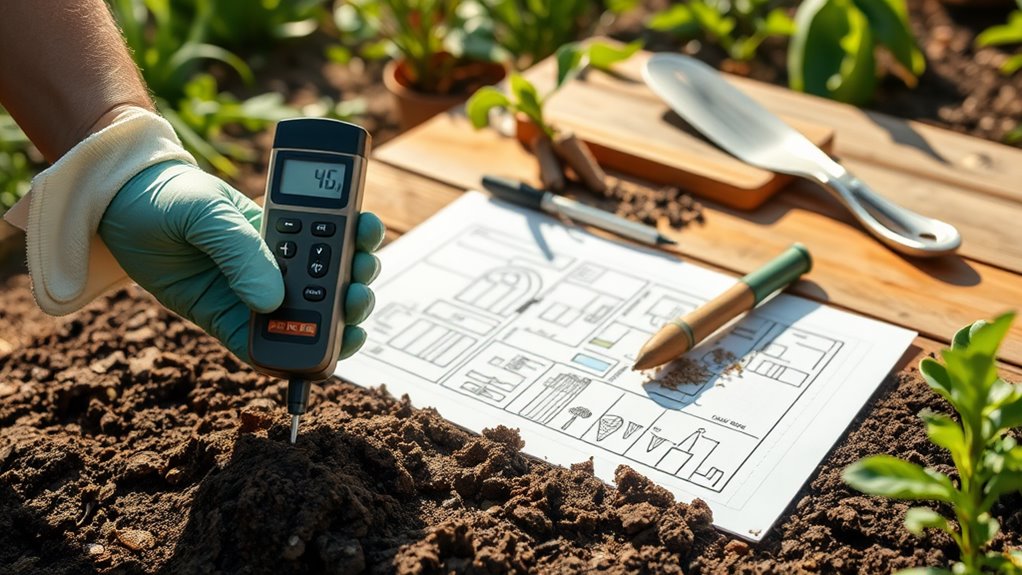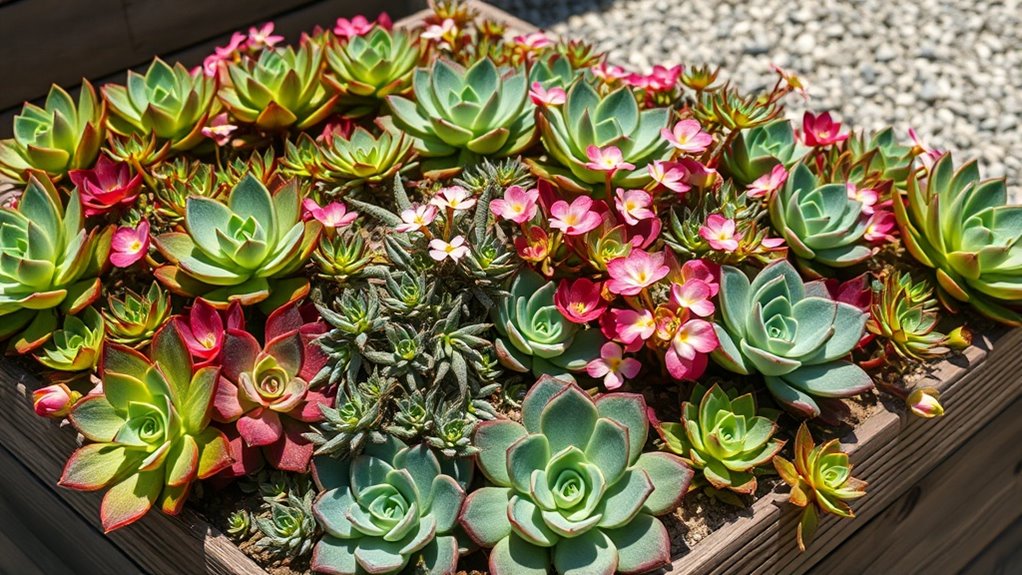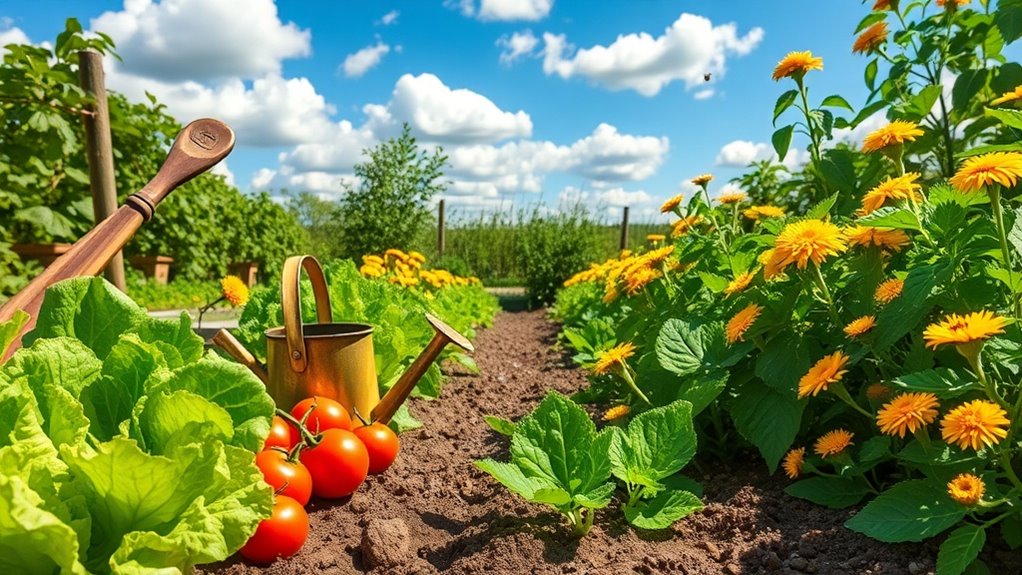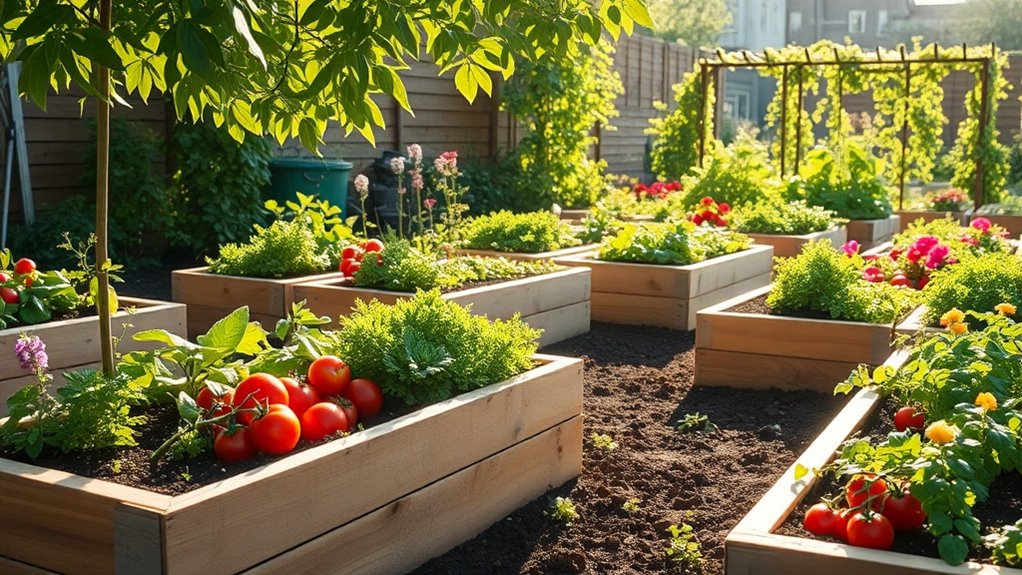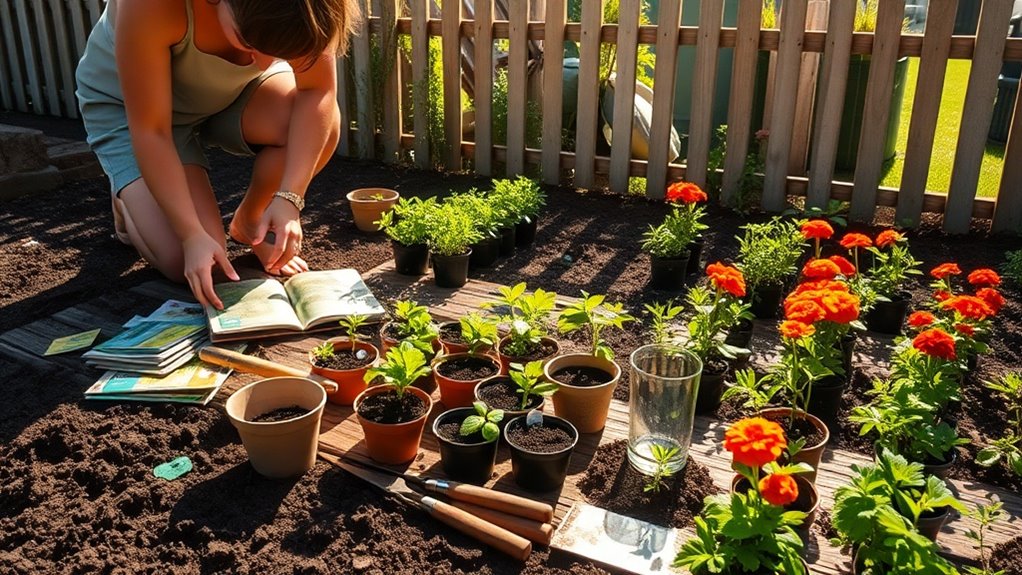The First 3 Things You Should Do Before Planting Anything
Before you plant anything, you’ll first assess your soil health by testing pH to hit that ideal 6-7 range, checking nutrients like nitrogen, phosphorus, and potassium, and evaluating drainage for better root growth. Next, plan your garden layout by sketching a map, noting sunlight patterns, and adding pathways for easy access. Then, select the right plants based on your soil type, sun exposure, and climate zone. Once you’ve covered these basics, you’ll uncover more ways to maximize your garden’s potential.
Key Takeaways
- Test the soil pH to ensure it’s between 6 and 7 for optimal nutrient absorption.
- Check key nutrients like nitrogen, phosphorus, and potassium to address any deficiencies.
- Evaluate soil texture by feeling it to determine if it needs more organic matter.
- Assess soil drainage by timing water percolation through a dug hole.
- Sketch a garden layout map to observe sunlight patterns and optimize space.
Assess Soil Health
Before you plant, it’s essential to assess your soil’s health to ensure it supports strong plant growth.
In your gardening preparation, begin by testing soil pH with a simple kit, aiming for a level between 6 and 7 to optimize nutrient absorption. Check key nutrients like nitrogen, phosphorus, and potassium; deficiencies can be corrected with targeted amendments such as compost or fertilizers.
Evaluate soil texture by feeling it—sandy soils drain fast but need more organic matter, while clay holds water but compacts easily. Assess drainage by digging a hole and timing water percolation; poor drainage requires mixing in sand or peat. By conducting soil testing, you can identify and remedy issues that might be causing your garden to fail.
This detailed gardening preparation prevents plant struggles and boosts yields.
Furthermore, soil testing plays a crucial role in increasing crop yields by allowing gardeners to make informed adjustments based on essential soil analysis.
Plan Garden Layout
Once you’ve assessed your soil’s health, you’ll want to plan your garden layout to maximize space and efficiency. This means sketching a clear design that suits your available area, ensuring every inch serves a purpose while promoting easy maintenance.
-
Sketch a detailed map****: Draw a scale diagram of your space, noting dimensions and features like fences or slopes to visualize arrangements.
-
Consider sunlight patterns****: Observe how sun and shade move across your garden to position beds optimally for growth conditions.
-
Incorporate pathways: Design walkways that allow easy access without compacting soil, making weeding and watering straightforward.
-
Optimize for flow: Arrange sections to minimize wasted space, creating a logical progression that enhances usability and aesthetics.
By following a comprehensive checklist, you can ensure your garden preparation is thorough and effective.
After planning your layout, consider the next step in gardening preparation by selecting the right plants that align with your soil health and environmental conditions.
Select the Right Plants
With your garden layout planned, you’ll need to choose plants that thrive in your specific conditions, such as soil type, sunlight exposure, and climate zone, to ensure a healthy and productive garden.
Start by testing your soil’s pH and texture; select acid-loving plants for acidic soil or drought-tolerant varieties for sandy types.
Match sunlight needs—full sun for tomatoes, shade for ferns—and verify hardiness zones via USDA maps.
Consider water requirements, growth habits, and companion planting to avoid competition.
Research native species for easier maintenance and better ecosystem fit, boosting your garden’s success. To optimize your garden’s foundation, prioritize soil preparation techniques for better plant establishment.
To further boost your garden’s output, explore the technique that achieved tripling vegetable yield as shared in gardening insights.

